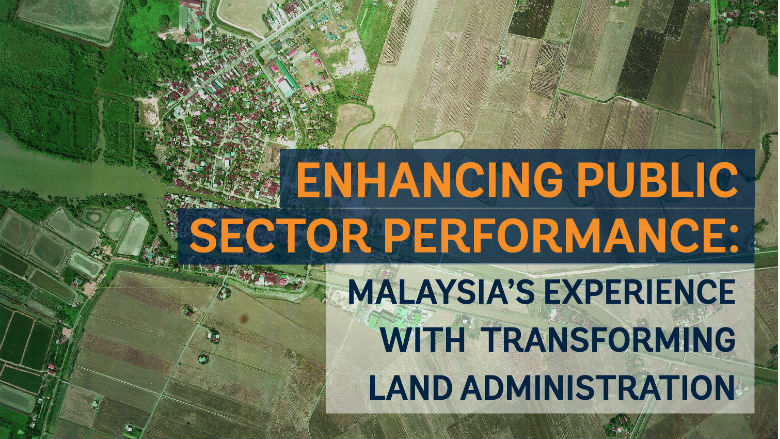Effective land policies and land administration services are key for good governance.
- They are fundamental for securing land rights, developing land markets, and managing land resources to contribute to economic growth, efficient public sector service delivery, environmental protection, social cohesion and security.
- However, approximately 70% of the world’s population does not have access to affordable land administration systems.
- Common challenges preventing developing countries from establishing quality land administration systems are complexity and costs in establishing comprehensive land records and maps.
Malaysia is a success story in delivering efficient land administration services, ranking 42 out of 190 economies in the ease of registering property, according to the World Bank Doing Business 2018 report. Some key successes:
- Established a cadaster (an official register of the quantity, value, and ownership of real estate used in apportioning taxes) and land registration system. Enables efficient provision of land administration services.
- Introduced qualified titles. Allows registration without a formal cadastral survey, making it faster to complete the cadaster and land registry.
- Business-process re-engineering. When implemented with strong political support, it provides the means to break down strong ‘silos’ in systems that have evolved over long periods of time, especially moving from paper-based to digital systems.
- Information and communications technology (ICT) tools. The introduction of the ICT system e-Tanah (e-Land) and the development of clear interfaces to other systems have improved services and helped generate the spatial and textual data integration that Malaysia needs to successfully implement the National Spatial Data Infrastructure (NSDI).
- Public-private partnerships (PPPs). These partnerships potentially offer an innovative business model for governments to consider when deciding how to finance the development and modernization of land administration systems.
Learning from Malaysia’s limitations can be instrumental as well.
- Avoid complex national/state division of the cadaster and land registry. Cadastral and land registry data and systems need to be integrated in order to provide complete and accurate land administration data to both public and private users.
- Develop a mature and efficient NSDI requires clear mandates, roles and responsibilities for all parties. To be efficient, the NSDI should have a clear policy and legal framework in order to define the roles and responsibilities of data suppliers and users, to facilitate data sharing and integration, and to ensure a focus on user needs of the data.
